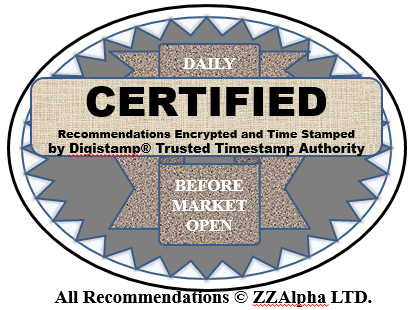Performance measured against benchmarks
The ZZAlphaŽ machine
learning engine has been applied to over 3 market segments,
and results evaluated against the IWB benchmark. As the table
below shows, in many instances over 5 year, 3 year and
single year periods, the ZZAlphaŽ recommendations
substantially exceeded their benchmark. The results
come from recommendations that were certified each morning
before market open, to assure they support stringent audit.
We show here results for portfolios of 10 equities, recommended daily (i.e. 50, recommendations a week for each market segment).
We show here results for portfolios of 10 equities, recommended daily (i.e. 50, recommendations a week for each market segment).
Annualized returns for ZZAlphaŽ recommendation portfolios.
| Portfolio | 5yr | 3yr | 1yr | Max YoY drawdown% |
|---|---|---|---|---|
| BigCap100 size 10 | 16.9 | 7.3 | 8.5 | 34 |
| VeryHighLiquidity size 10 | 21.7 | 13.3 | 38.7 | 56 |
| HighLiquidity size 10 | 33.3 | 26.9 | 46.6 | 59 |
| BigCap100 Sector size100 | 12.7 | 5.1 | 19.7 | 32 |
| IWB Benchmark size1000 | 18.8 | 7.2 | 24.2 | _ |
Notes to tables:
1) Returns are annualized returns for multi-year periods, NOT average annual returns.
2) Benchmark includes dividend reinvestment but portfolios omit dividends.
3) We never use leverage or margin or options in evaluating results.
Assumptions in performance
metrics
The results shown here are
produced by a mechanistic trading results simulator used to
evaluate all the ZZAlphaŽ machine learning engine
recommendations. (The evaluation is entirely distinct
from the machine learning technique.) The results shown
assume no trading commissions, no spread, no slippage and no
dividends. These results assume purchase at a price
equal to the reported opening price on the day of
recommendation and sale at the reported opening price five
trading days later. (Of course, traders often can and do
improve on this pricing assumption by scrutinizing the
market flow and news at the open or during the day.)
